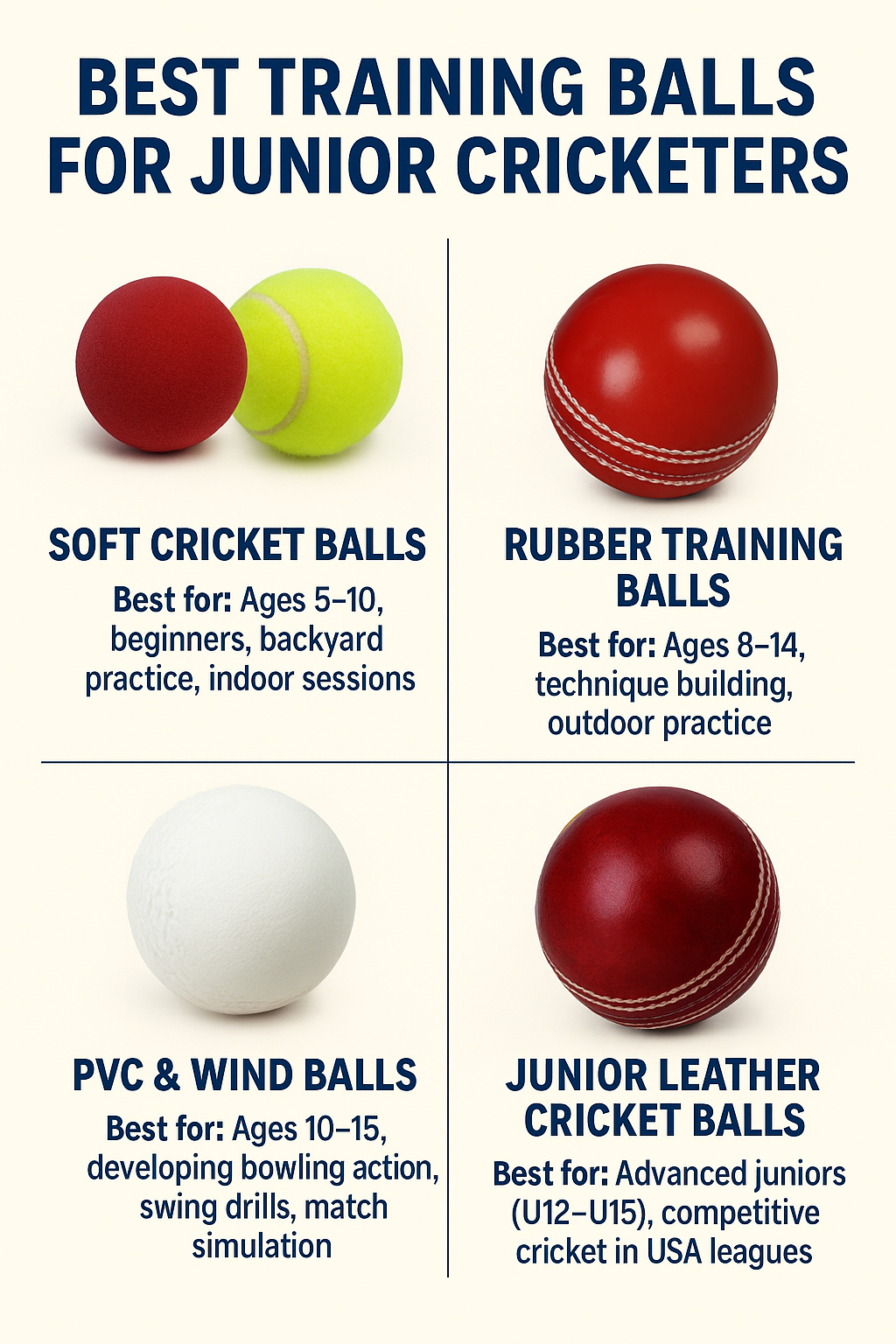Cricket is growing rapidly across the United States, and with more kids joining academies and school programs, choosing the right training ball has never been more important. Junior cricketers need balls that help them learn technique, build confidence, and practice safely — whether they’re hitting in the backyard, training in indoor nets, or starting leather-ball cricket.
Here’s a complete USA-friendly guide to the best training balls for young players, and when to use each type.
1. Soft Cricket Balls (Tennis + Foam Balls)
Best for: Ages 5–10, beginners, backyard practice, indoor sessions
Soft balls help young kids develop hand-eye coordination without the fear of injury. They bounce well, are light on the bat, and allow longer, fun sessions.
Why they’re great for juniors:
-
Reduce risk of injuries
-
Ideal for drills like catching, fielding, and reaction work
-
Perfect for small spaces and younger age groups
Common Types in the USA:
-
Foam balls (super-soft, great for starters)
-
Tennis balls (bouncy, excellent for early batting basics)
2. Rubber Training Balls
Best for: Ages 8–14, technique building, outdoor practice
Rubber cricket balls are a step up from tennis balls, offering realistic bounce and weight — without the hardness of leather.
Benefits:
-
Safe and durable
-
Good seam practice for young bowlers
-
Affordable and available in many U.S. sporting stores
These balls help juniors transition towards more competitive cricket.
3. PVC & Wind Balls
Best for: Ages 10–15, developing bowling action, swing drills, match simulation
Wind balls are lightweight PVC balls with a soft but firm feel, often featuring a raised seam. They behave closer to leather balls, especially for swing practice.
Why coaches love them:
-
Excellent for beginners learning seam or swing bowling
-
Safer than leather for early batting sessions
-
Can be used indoors and outdoors
Many academies across the U.S. — especially in states like Texas, California, and New Jersey — use wind balls for early-stage training.
4. Poly Soft Leather-Feel Balls
Best for: Intermediate juniors starting hard-ball cricket
These balls give young players the feel of leather cricket without the same impact strength. They’re ideal for kids who have outgrown basic tennis or rubber balls.
Advantages:
-
Great for batting timing
-
Durable for long sessions
-
Seam helps train accuracy and wrist position
They’re a key transition tool before kids move into competitive leather-ball leagues.
5. Junior Leather Cricket Balls
Best for: Advanced juniors (U12–U15), competitive cricket in USA leagues
Once players are ready for proper hard-ball cricket, junior-size leather balls are essential. These are slightly smaller and lighter, helping developing players get used to match conditions safely.
Why they matter:
-
Build real match skills
-
Perfect for academy nets
-
Required in most U.S. youth tournaments
High-quality junior leather balls offer better seam control, swing, and durability.
Choosing the Right Ball for Your Junior Player
Here’s a quick cheat sheet:
| Junior Level | Recommended Ball Type | Where to Use |
|---|---|---|
| Beginner (5–7) | Foam/Tennis balls | Backyard, indoor nets |
| Early Learner (7–10) | Rubber balls, light PVC | Basic batting/bowling drills |
| Developing Player (10–14) | Wind balls, poly balls | Skill-building, academy practice |
| Advance Stage (12–15) | Junior leather balls | Competitive nets & matches |
Final Word
For young cricketers in the USA, the right training ball can make learning safer, smoother, and more effective. Start soft, introduce seam slowly, and transition to leather only when technique and confidence grow.
The goal is simple: build skills without fear, and let kids fall in love with the game.
